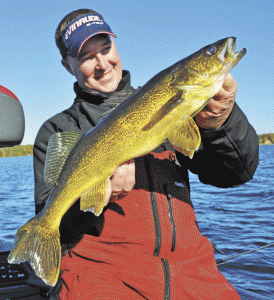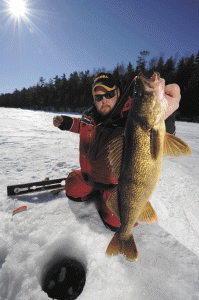2013 Fall Mack Days on Flathead Lake – October 4-November 17
The Confederated Salish & Kootenai Tribes sponsor
2013 Fall Mack Days
On Flathead Lake-
(1)-$10,000 & (5) $5,000 & (10) $1000 + (3,500) $500-$100 tagged lake trout
Oct. 4th -Nov. 17th
Fridays, Saturdays, & Sundays- except the last 10 days
Nov. 8th-17th will be 10 straight fishing days
25 days total-pick your 15 best days to count for the lottery
& top angler prizes. Each day counts for bonuses.
Oct. 4,5,6,11,12,13,18,19,20,25,26,27, Nov. 1,2,3,8,9,10,11,12,13,14,15,16,17
Fish the entire lake
All it takes is one fish to win! Check in stations at Somers, Blue Bay, & Polson
$30,000 in Lottery Prizes ($1,000-$200)-all it takes is one fish/ticket to win
Plus-Top ten angler prizes $700-$200-best 15/25-days count-last day is separate
Captains $250-(4 prizes), Smallest lake trout $250-(2 prizes), Largest lake trout $500
Top lady anglers $300,$200, $100. $100, $100-totals used
Youth anglers- (17-13) 1st– $200, 2nd-$150, 3rd-$75, 4-5th-$50 (12 & under)-1st-$100, 2nd-$75, 3rd-$50 will also be entered in the lottery drawing. Weekend Prizes-eleven $200 & $100
Golden Angler Award(70 & older)-$200 & $100
3 days of single/team-heaviest 4-fish-3/29-Friday, 4/20-Saturday, & 5/5-Sunday-
Last Day Only: $500, $300, $200, $100 & Heaviest Mack under 30”-$200 & $100
BONUSES: ALL ANLGERS WHO ENTER 20 OR MORE LAKE TROUT WIN.
The higher your total is at the end of the event-the higher your bonus-every day (25) counts.
Fish Fry for participants & families-Nov. 17th at Blue Bay
Awards Ceremony at 5:00
Check the rules, prizes, check in sites, & register online at www.mackdays.com
Telephone 406-883-2888 Ex. 7294
Future-Forward-Fishing-From PC Livewell

Pro angler Mark Courts with the spoils of iPilot Link’s precise ‘Follow the Contour’ capabilities. Photo courtesy of Thomas Allen
Technological Trifecta Helps Anglers Find, Stay On, and Catch More Fish
Traditions Media
Pro fisherman Mark Courts is no stranger to technology. He’s one of the new breed of anglers comfortable with laptops, iPhones, iPads and the latest fishing electronics on the market. And he knows how to use technology to his advantage in the walleye and bass tournaments he fishes.
“I’m always looking for new ways to find and catch fish, so I naturally gravitated to Humminbird, Minn Kota and LakeMaster,” says Courts. “They offer a complete fishing electronics ‘system’ that has definitely helped me put more fish in the boat.”
What Courts is talking about is the seamless integration of Humminbird sonar, HYPERLINK “http://store.lakemap.com/category/581675/Digital_GPS_Map_Cards”LakeMaster digital GPS mapping and Minn Kota trolling motors. With the recently introduced HYPERLINK “http://www.youtube.com/watch?v=bwCnyM9FmQE”i-Pilot Link, now your Humminbird sonar, LakeMaster maps and Minn Kota trolling motor can talk to each other, giving you the ability to create, store and revisit fish-producing spots and routes, all with little more than the touch of a button.
“I think if more anglers got on the technology bus, they’d quickly realize they can maximize their time on the water and catch more fish,” says Courts.
Do Your Homework
The first part of Courts’ system utilizes a new computer software DVD from LakeMaster called HYPERLINK “http://store.lakemap.com/category/581679/Contour_Elite”Contour Elite, available for the same regions across the country as the digital charts for Humminbird units, including HYPERLINK “http://store.lakemap.com/products/607045/Texas-Oklahoma”Texas/Oklahoma, where the upcoming Bassmaster Classic going down.
“Before I fish a body of water, I’ll fire up the laptop and study the lake via the Contour Elite software,” says Courts. “It features all the same high-definition LakeMaster maps you’ll find on your card, so it’s simple to search out spots based on depth contour, slope, structure, even sun and current exposure.”
The software also offers recommendations for different species based on season, time of day, water conditions, cloud cover and wind. You can even choose a first-person point-of-view to “walk” through the lake’s structure in 3D.
“Once I’ve put together a couple dozen key locations and trolling routes, I’ll export that data to a blank SD card and upload to my Humminbird unit,” says Courts. “Then it’s as simple as launching the boat and letting iPilot Link take over. If the spots are close enough, I’ll simply let iPilot Link motor me from spot to spot.”
Along the way, Courts adds waypoints into his Humminbird when he catches fish. “Here’s what’s really cool,” says Courts. “I can pop the card back in the computer when I get home and import the waypoints where I caught fish. Then I can have the software run a search for other locations that match those same structural features. A lot of times it’ll find locations I would’ve missed! Definitely gives me a good idea of where to start the next time I fish there.”
Follow The Contour
The second component of Courts’ system utilizes Minn Kota’s new HYPERLINK “http://www.minnkotamotors.com/products/accessories/ipilotlink/freshwater.aspx”iPilot Link. “Whether I’m trolling cranks or spinners for walleyes or casting shoreline structure for bass, iPilot Link gives me the ability to follow one-foot LakeMaster map contours with the press of a button,” says Courts.
That means if he finds walleyes on a 22-foot break, he can lock in his trolling vector to follow exactly that contour at whatever speed he designates, eliminating boat control from the equation.
“IPilot Link is going to change the way tournaments are fished,” says Courts.
Thanks in part to Down- and Side Imaging, shallow water and visible structure bass anglers are gaining more confidence in deep water, once the realm of guys with years of experience and specialized techniques. Add iPilot Link to that, and Courts thinks you’ll see a lot of bass guys switching over from cable drive motors to the Minn Kota Terrova with iPilot Link.
‘“Especially for big open water tournaments like Erie, Lake Superior’s Sturgeon Bay, and reservoirs down south, being able to follow deep lake contours is going to be huge,” says Courts. “And, on the shallow water side, after setting water level offset to the current lake level, I can set a zero contour so the boat follows shoreline whatever distance out I want, allowing precise casts to docks without having to touch a foot pedal.”
Staying Put
The third component of Courts’ system allows him to stay put when needed. For that, he turns to iPilot Link’s Spot Lock feature. For example, when he’s searching out isolated pods of roaming walleyes on main lake flats, he’ll keep his finger on the Spot Lock button of his remote control, eyes glued to his bow-mounted Humminbird unit.
“When I’m running and gunning and ‘power-corking’ walleyes, I can mark fish just a little bit sooner with the front graph,” says Courts. “Once I find ‘em, I simply hit the Spot Lock button and iPilot will reposition itself to exactly that location. Then it’s pitch and pluck,” says Courts.
He says it’s way more precise than trying to hold the boat in the exact position with your kicker or big motor and dropping bobbers in the drink. “I can get a lot more precise at holding that exact location and now I can actually go to the back of the boat and net fish or I can stay on ‘em until they stop biting. All that without having to lift my anchor 52 times in a day,” says Courts.
Courts uses much the same approach for fishing river system wingdams. Prior to a tournament he’ll mark high-probability wingdam locations in LakeMaster’s Contour Elite PC software and upload them to his Humminbird.
“Used to be you had to position yourself with the anchor and if you didn’t like that spot you had to physically lift your anchor and move,” says Courts.
Now he sets Spot Lock locations to fish multiple locations on a wingdam without making a ton of noise with the anchor, putting stealth in his corner, especially in low-water situations.
“After I hit one Spot Lock location, I’ll just let iPilot Link quietly move me to the next location on that wingdam. It’s automated running and gunning until I find the fish,” says Courts.
At the end of the day, whether he’s fishing walleyes or bass, Courts sees the integration of Humminbird electronics, LakeMaster digital GPS mapping software and cards, and Minn Kota trolling motor technology as a technological trifecta that gives anglers an upper hand.
“A lot of the veteran anglers may give me grief over how I use technology, but they change their tune pretty fast when they see the results in the livewell,” says Courts.
And, at the end of the day, whether you’re a tournament pro or simply a guy who fishes for fun on the weekend, we all want to catch more fish. And if it works, we’ll use it.
Top 10 Tip-Up Dos and Don’ts

By Jim Edlund with Pat Kalmerton
Courtesy Traditions Media
Amidst the focus on jigging and mobility over recent years, some proven strategies have been lost in the icy shuffle.
Regardless, tip-up fishng has consistently produced fish and put guys head-to-head in 50-yard dash sprints since day one. It’s forged (and compromised) friendships over the years, served as fun fish story fodder, and even sent a few unlucky sots to ER for stitches and wound licking.
One guy who is tops on tip-ups is Pat Kalmerton of Sheboygan-based Wolf Pack Adventures. The good-natured guide will be the first to tell you that tip-up fishing is a surefire way to cover lots of water quickly and ice just about anything that swims.
But Kalmerton stresses that tip-up fishing—like any angling approach—requires attention to detail. Set-it-and-forget is not part of this Badger’s program.
“I’ve had the opportunity to learn tip-up techniques from some of the best minds in ice fishing,” says Kalmerton. “I’m fortunate, because it would have taken me lifetimes to learn so much.”
Thus, Like Cliff’s Notes for some class you snoozed through in high school, here are Kalmerton’s Top 10 Tip-Up Dos and Don’ts to ace this winter semester’s tip-up test.
1) Heavy metal supersizing
Kalmerton says there’s a time and place for big hooks, but when in doubt, drop down a size. In the case of walleye warfare, he slides down to a #16 treble, usually opting for the extra flash of a gold Eagle Claw.
“I load the spool with 30-pound Frabill tip-up line and tie 8- to 10-feet of 8-pound Trilene 100% Fluorocarbon to a 25-pound InvisaSwivel. Make sure to tie the fluoro side first so you don’t have to run the whole tip-up through the Palomar loop! I slide one Owner glow bead up the fluoro and terminate the #16 gold treble with another Palomar. Then slide the bead down over the knot. I attach a split shot just heavy enough to keep the bait in a small strike window six to 10 inches above the hook and call it a day,” says Kalmerton.
For pike, he swaps out the 8-pound fluoro for 12-pound and sizes up to a #12 treble. “More often than not, 12-pound fluoro will handle any scissors beaks,” says Kalmerton.
When fishing 10-inch-plus suckers in trophy pike fisheries Kalmerton rigs 50-pound fluoro, five beads, a #6 Northland Real-Baitfish Image Colorado blade and clevis and a single 1/O hook tied with a snell knot.
“The thing I like about the snell knot is it pivots the hook when I really reef the hookset. I learned this from bass fishermen who fish punch baits—definitely ups hookset percentages.”
2) Not doing your homework
Kalmerton recommends studying LakeMaster GPS maps and PC software like Contour Elite ahead of time to surgically locate high-probability “spot-on-the-spot” locations.
“Take the time to study the body of water you’re going to fish and have a gameplan,” says Kalmerton.
3) Setting up too close, or too far from fish-holding structure
“One reason people get turned off to tip-ups is they spend all day in no-man’s land,” says Kalmerton. “Or setting tip-ups right on top of weeds, which can result in a tangled mess that fish will pass up 9 times out 10.”
He searches out ambush locations like green weeds, breaks, river currents, bottom transitions, and other structure where baitfish hide, instead of directly on top or too far away.
4) Fishing dead weeds
If you pull up your auger and the water’s full of plant matter that stinks, those are dying weeds. Baitfish and predators are drawn to vegetation that’s still producing oxygen, not rotten vegetables.
“Gotta get to the buffet with the freshest salad and best baitfish,” laughs Kalmerton.
5) Setting tip-ups too close together
Where you’re allowed more than one tip-up by law, fish different locations along any given structure, spreading them out as far as state regs allow. Imagine the ice as a grid, and position your tip-ups out from your base location along a break at different depths.
6) Fishing too small of window in the water column
“A lot of anglers put a depth bomb on, come up six to eight inches for walleyes and two feet for pike,” says Kalmerton.
He suggests using your electronics to find the thermocline and baitfish to pinpoint where in the water column fish are feeding. For example, in late winter you may find that fish are up high, close to the ice, looking for water with more oxygen.
7) Mouse hunting with an elephant gun—and vice versa
Kalmerton suggests learning about the wave of modern tip-ups. Find the right tip-up for your given species—or something versatile.
“The new Frabill Ice Spider and Dogbone can be used for both predators and panfish. For scouting panfish, simply adjust the shaft higher on the tip-up arm to release flag spring compression, which then results in sensitivity to very light bites. When hunting larger predators, just make sure you push that shaft back down.“
8) Tip-up neglect
“Walk around and make sure your tip-ups aren’t frozen in, there’s bait on your line, and it’s free of weeds,” says Kalmerton.
He adds that if you’re setting tip-ups for the evening “power hour,” think about using a Frabill Thermal to keep your holes ice-free.
9) Poor visibility
Kalmerton orients his tip-ups in the same direction, so at a mere glance he see when one flag in a series trips. When snow is deep, he’ll choose a Frabill wooden classic tip-up with a long spool arm to reach the hole and ride the flag above the snow. And for fishing in low visibility situations, he’ll affix a Frabill tip-up light to illuminate the flag shaft.
10) Weak hooksets
Knowing when to set the hook on a tip-up can be difficult.
“But that’s the beauty of downsizing hooks. Most of the time the fish doesn’t spit the bait. As soon as I know the fish is running away from me and I feel weight, I reef on ‘em hard! Chances are you’re going to get a good corner-of-the-mouth hookset because that fish is committed to your bait!”
Kalmerton also likes the A-game potential of Frabill’s new Calibrator tip-up system.
“An onboard digital read-out tells you how deep your bait is, what time the fish hit the bait, and how much line is out, clueing you in whether it’s a walleye or pike. That kind of info definitely puts more fish on the ice and tells you first-hand what works and what doesn’t.”
The new Frabill Calibrator also has an illuminated clock on it. “Yeah, not only does it tell me when fish are feeding, but reminds me to shut off my cell because the wife always calls to come to home when the fish are biting!”
